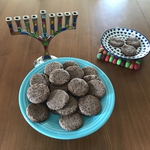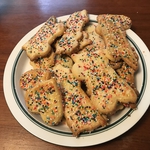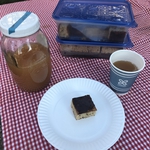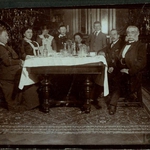Holiday Baking and Hanukkah
Eating through the Holidays
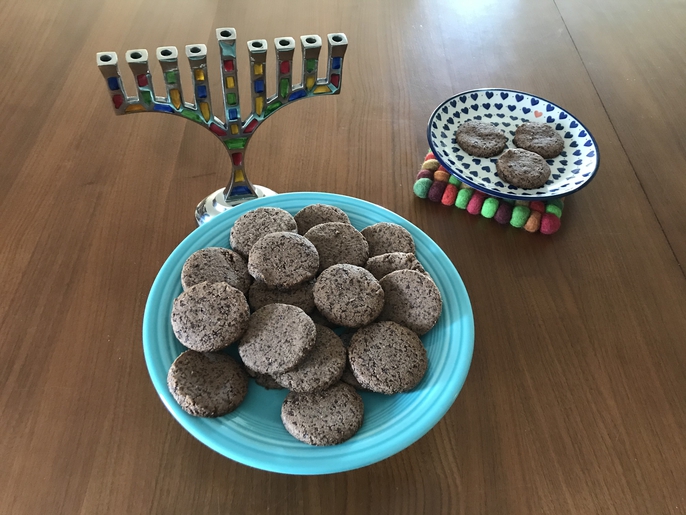
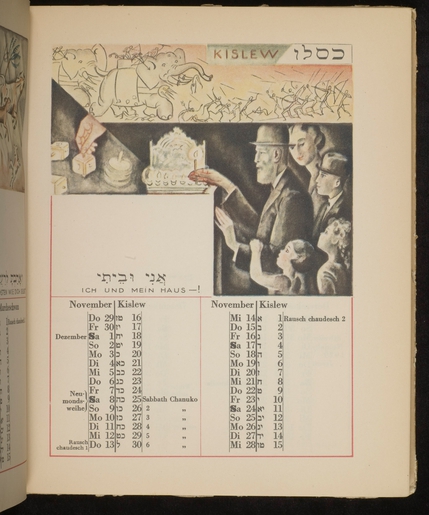
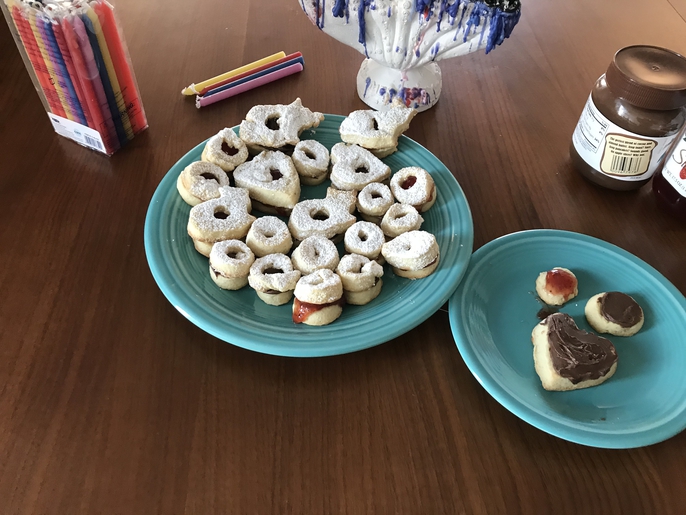
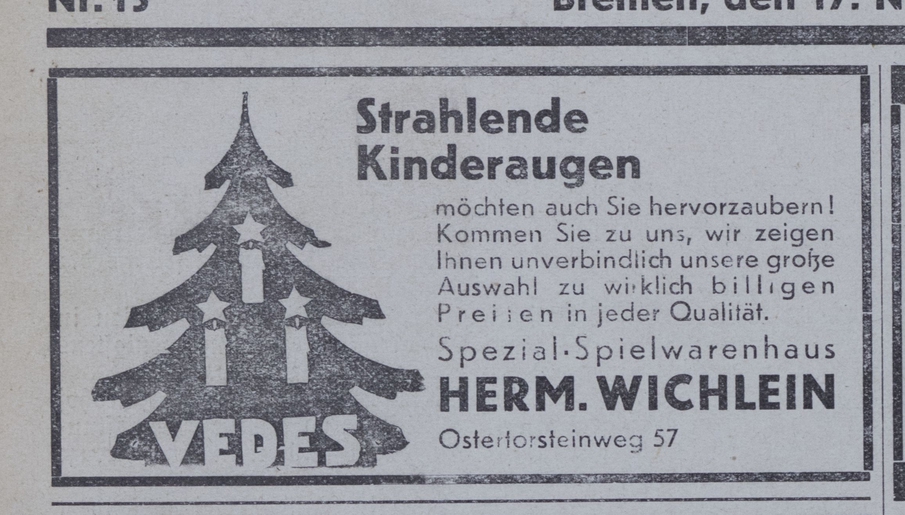
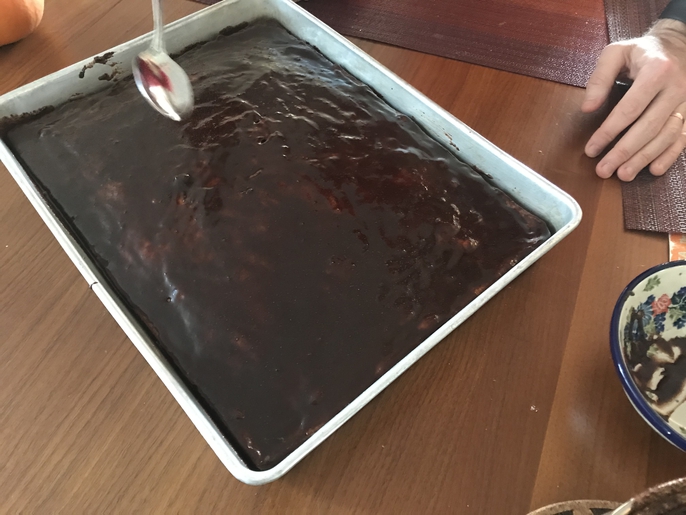
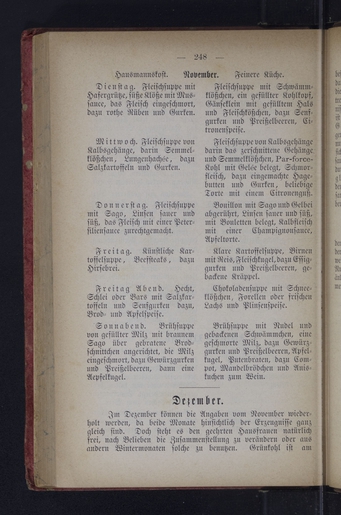
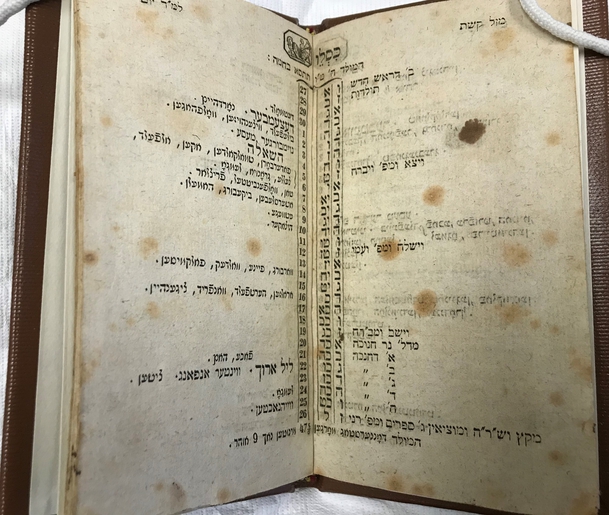
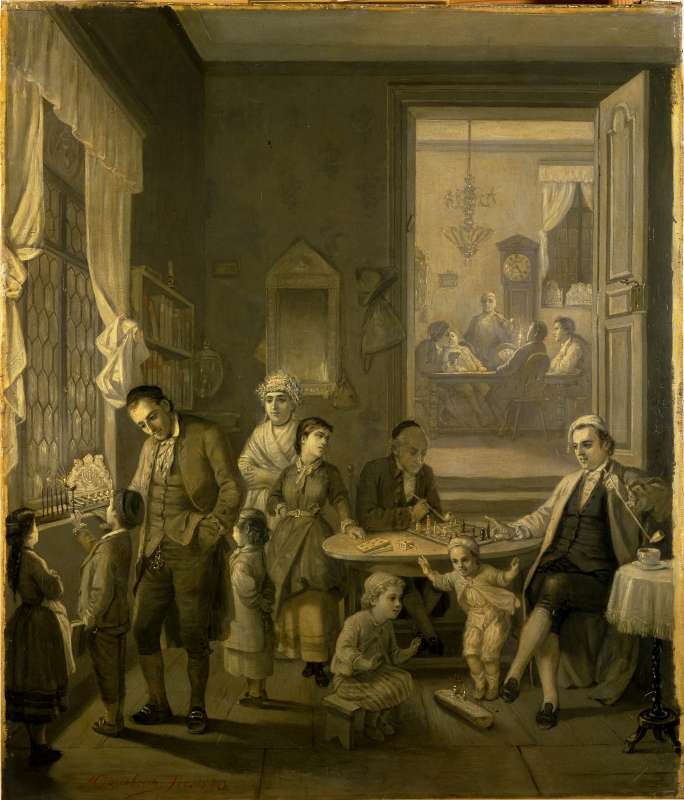
While diving into the holiday spirit, archivist Michael Simonson and I began wondering how a German-Jewish Hanukkah was traditionally feasted. Early German-Jewish cookbooks offer few insights into what Jews ate and drank on Hanukkah. Holiday menus from 19th and early 20th century cookbooks focus on Passover, Rosh Hashanah and Yom Kippur. Although there is a Hanukkah tradition of eating fried foods (the cooking oil is symbolic for the oil used to light the menorah for eight nights), Hanukkah is considered a minor holiday, thus 19th and early 20th century cookbooks don’t have specific recipes and menus for it.
Many popular fried foods traditionally made on Hanukkah can be traced to German-Jewish recipes. Latkes, the fried potato pancake popular in American-Jewish Hanukkah traditions, stems from Eastern European Jewry, who in turn adopted the tradition of adding potato to their pancakes from German Jews.
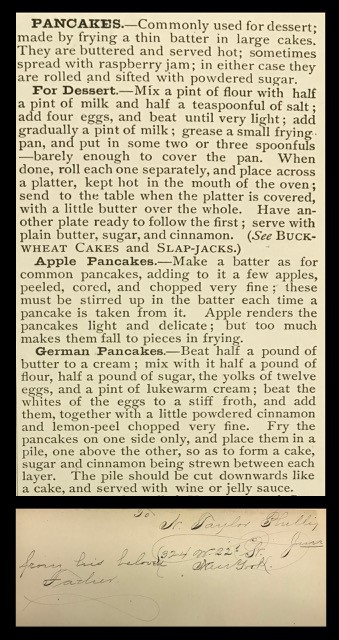
In the 19th century, German Jews began frying pancakes made with a mixture of cooked potatoes, potato flour or raw potatoes, often in goose schmaltz. They were served with gribenes (goose skin cracklings) and roast goose.
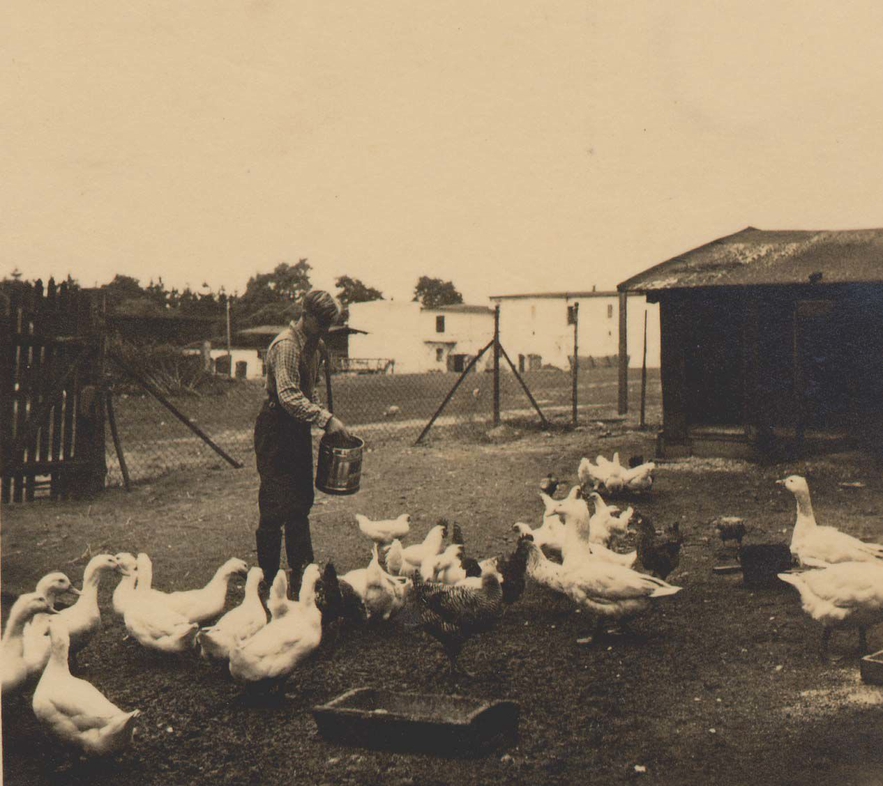
Roasting goose was another popular German-Jewish tradition that has since faded away. Some scholars claim that German-Jews adopted the tradition of eating the Hanukkah goose from their Christian neighbors; however, this tradition may also come from the fact that geese bred to be in season around the time of Hanukkah. Raising geese was an important occupation for Jews in the Rhineland because they were often excluded from other professions. Jews in Alsace were particularly known for this occupation. Geese were important in part for their schmaltz, the fat used for frying Hanukkah and Purim pastries. Rebecca Wolf’s cookbook described “Gans zu nudeln” ("noodling” or fatten a goose) in addition to having many delicious recipes for preparing a goose.
Arguably, the Hanukkah goose may have fallen out of tradition in the United States, replaced instead with chicken or turkey. Another popular Hanukkah tradition with German-Jewish roots is the jelly doughnuts, or sofganiyot, which can be traced to Berlinerkrapfen, a Berlin-style jelly doughnut that German-Jews brought with them to Israel in the 1930s. A sister to the Berlinerkrapfen is the Viennese Faschingskrapfen, which look and taste like its Berliner counterpart.
Although baking cookies is not considered a Hanukkah, German-Jewish volunteers at the Leo Baeck Institute have often spoken of their fond memories of eating cookies on Hanukkah. While there are no menus that show what cookies were eaten on Hanukkah, 19th and early 20th century German-Jewish cookbooks have numerous cookies recipes, like Springerle, Spitzbuben, and Butterplätzchen, most of which were part of the Christmas tradition and were adopted by German-Jews to serve on festive occasions like Hanukkah.
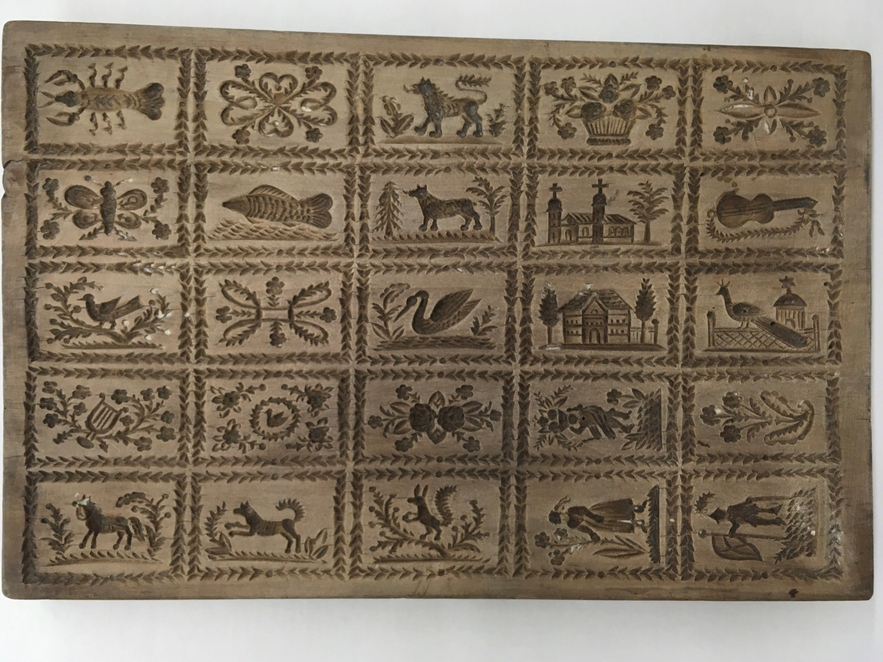
Many German-Jewish cookbooks have spiced cookie recipes made with hazelnut or almond flour, like recipes for Lebkuchen and Krokerle, cookies remembered as part of the Hanukkah tradition in Gabrielle and Sonya Gropman’s book The German-Jewish Cookbook. These spiced cookies, like Lebkuchen, anise cookies, and Zimtsterne (cinnamon starts), were traditions that German-Jews also carried with them when they immigrated to the United States, as can be seen in the Settlement House cookbook and the Temple De Hirsch cookbook.
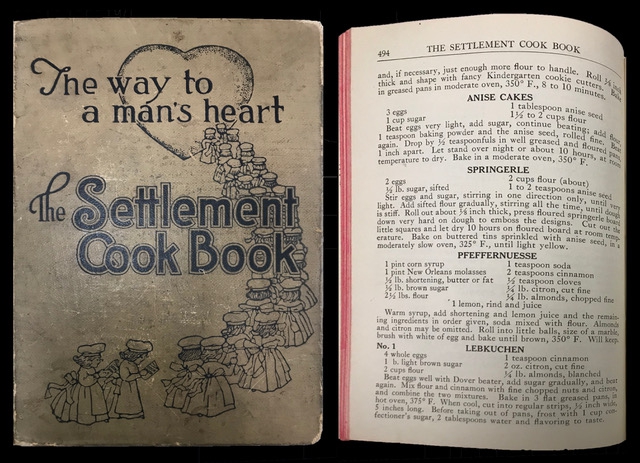
Chocolate spiced cookies, like the Gropman’s Krokerle, or the small chocolate pastries in Marie Kauder’s cookbook are a reminder of the Jewish connection to the beginnings of the chocolate trade in the West Indies and the popularization of chocolate as an addition baked goods.
We hope that examining the world of Hanukkah baking will offer an opportunity to connect and enjoy German-Jewish history, even if your holiday festivities this year are socially distant and possibly outdoors.
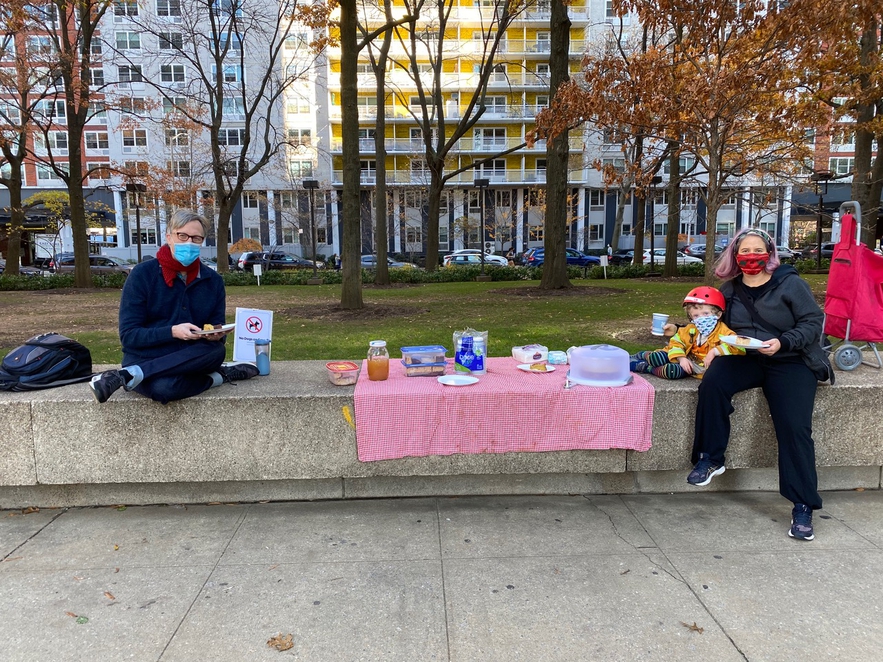
Bibliography:
Cooper, John. Eat and Be Satisfied : a Social History of Jewish Food. Northvale, New Jersey : Jason Aronson, 1983.
Gropman, Gabrielle Rossmer and Sonya Gropman. The German-Jewish Cookbook.
Marks, Gil. Encyclopedia of Jewish Food. Hoboken : Wiley, 2010.
Rodin, Claudia. The Book of Jewish Food : an Odyssey from Samarkand to New York. New York : Alfred A. Knopf, 1997.
